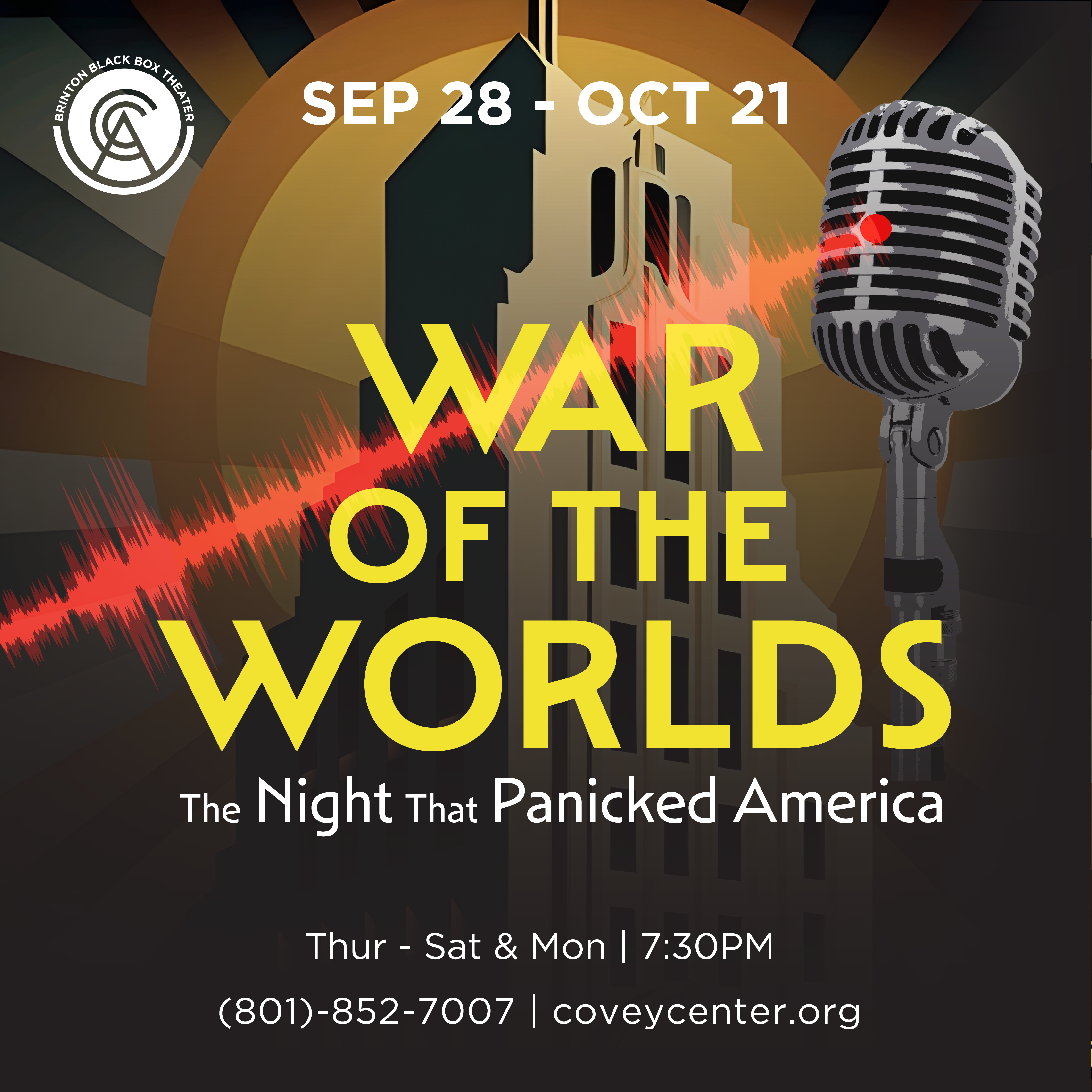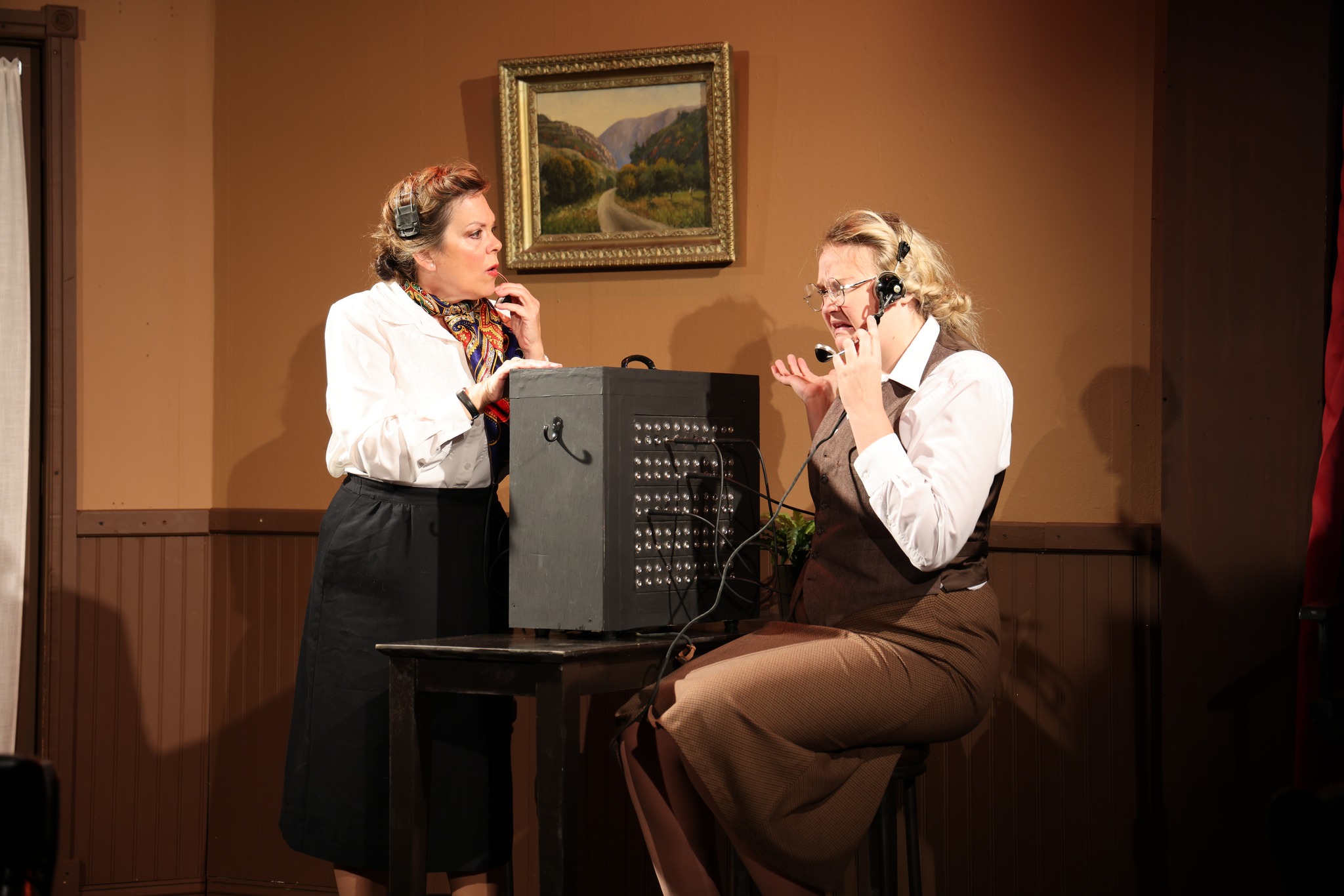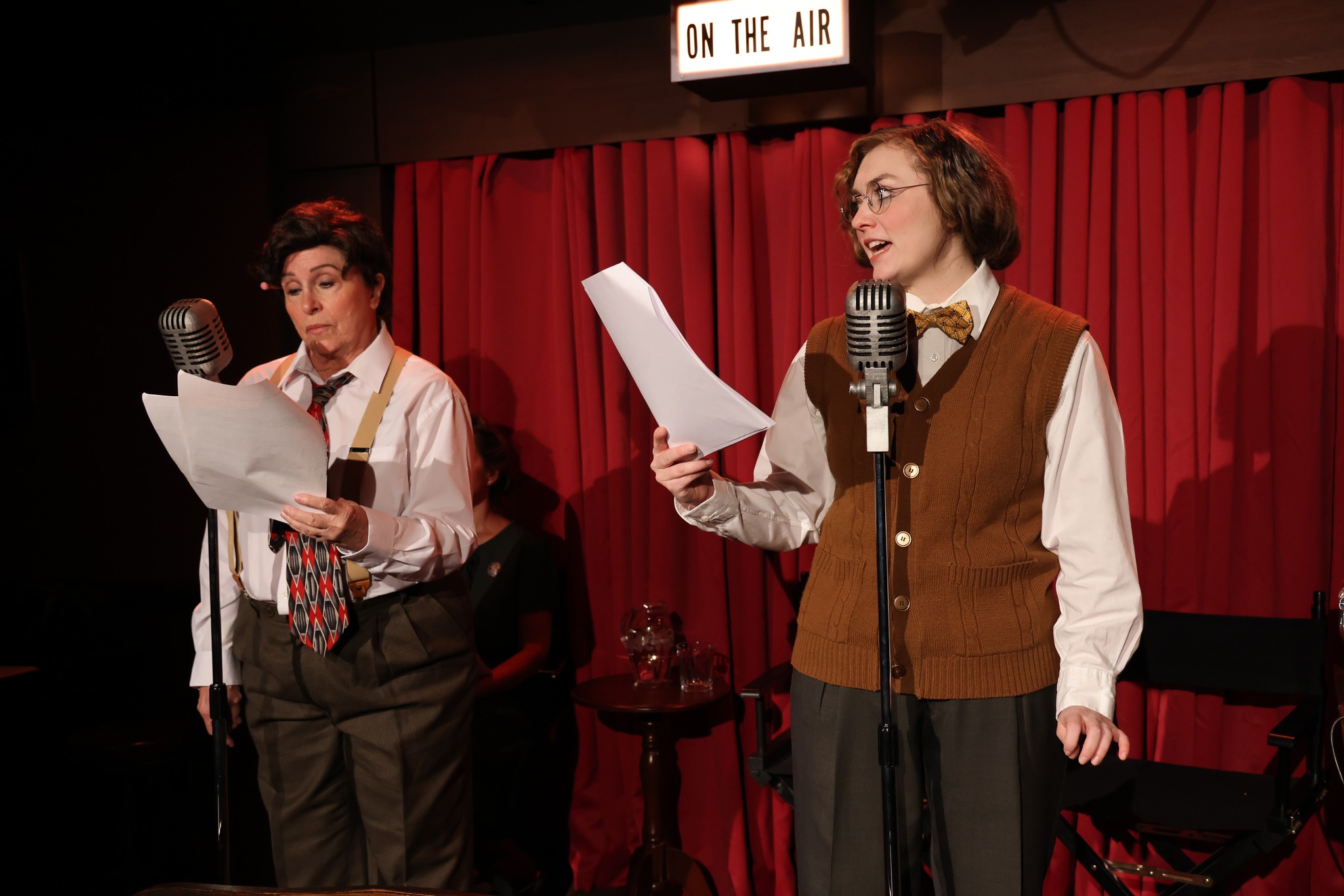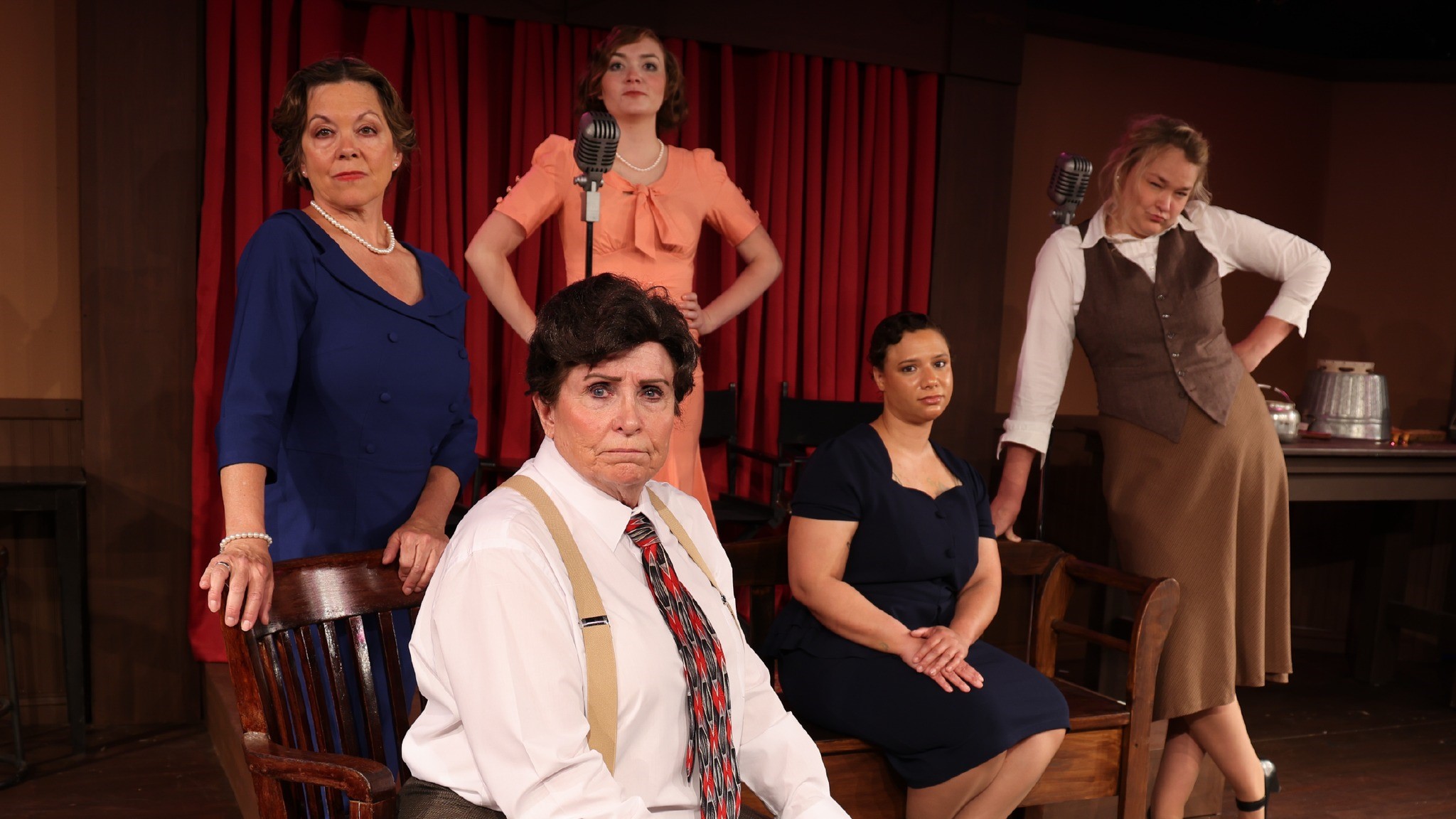PROVO — War of the Worlds was first written by H. G. Wells in the late 19th century. This science fiction book follows the Martian invasion of southern England. The stage adaptation (written by David Hanson) that is currently playing at the Covey Center focuses more on the infamous radio broadcast that took place in 1938. In that year, Orson Welles adapted War of the Worlds into a news broadcast reporting live on the invasion as the Martian invaders took over New Jersey. Many listeners thought that the broadcast was real, resulting in mass panic, hysteria, and large evacuations throughout the northeastern U.S.

Hanson’s theatrical interpretation of the events touches on the symbolism between the alien invasions within the plot and the very real fear of invasion that plagued the world during the Second World War. However, this production would benefit from a deeper exploration of the historical context of the play. The show is entertaining, but much of the direction seems to lie at the surface. The director, Adam Cannon, tends to rely on the outright conflict between Orson Welles and his counterparts more than any underlying conflict on a national level. This is also true for the characters’ motivation throughout the play. Cannon works with actors that are clearly sincere and driven. However, the lack of variation in their delivery creates points of confusion for the audience, as any nuance within the script is lost.
Nevertheless, Cannon’s style seems to work for some of the characters, as he focuses more on caricatures. For example, Katrina DeKarver garners the biggest laughs in her cartoon-like performances of Mr. Phillips, Kenny, and more. This is also true of Megan Richards, who plays about a dozen characters throughout the entire show. She proves her ability to seamlessly embody a scientist, a grandma, a hillbilly, a tired telephone operator, and more, breaking up the earnest yelling scenes of the other characters, much to the appreciation of the audience.
Jolene Croasmun also stood out as a character actress with her ability to slip into a new accent for each role she played. While nearly all the actors incorporated some sort of accent throughout the show, each with varying consistency, Croasmun’s portrayals were always clear and a pleasure to watch.

NaRhea Dawn as Howard handles the role of consultant to Orson with grit and tenacity. Dawn stands with power, unwilling to back down at any moment. Jacob Baird provides a sympathetic portrayal of John. Similar to Dawn, Baird is often tenaciously loud, fighting against Orson’s character. Orson is portrayed by Cathleen Metten, who projects with power in the theatre. Metten has a presence which makes it clear why she was cast in the leading role. Dawn, Baird, and Metten bring their power to the stage in large conflicts that raise the stakes.
Because of the many characters in the script and the need for all the female actresses to play male roles, the hair and makeup design is purposefully androgynous. The clarity of character really shines through in the costume design, relying on many layers that the actors can remove periodically to change character, and with it, gender. The designer, Elizabeth Crandall, finds ways to make these changes quick and distinct.
The Covey Center’s Black Box Theatre is small, but it feels large with this production. Cannon and the designers smartly use the sides of the theater to represent different places within the world of the play, dynamically moving the audience’s attention from one area of the set to the other. Unfortunately, there was no set designer credited in the program. Additionally, lighting designer Spencer Powell incorporates small twinkling lights poking through the ceiling. They shimmer at various points in the play, creatively tying in the themes of space and discovery from the text, while also helping the space feel more expansive than it is.

A cosmic-level highlight of the show is the sound design (another uncredited aspect of the production). In many of the comedic asides, the actors’ panic pantomime is accompanied by flawless sound effects that make the scenes feel real. In addition, the sound devices used by the foley artists within the show to create the radio broadcast were extremely compelling to watch. With a mix of pots, scrap paper, jugs, and other instruments, I was left wanting to listen to the real 1939 radio broadcast to see how it compares to what I saw on stage.
Seeing the stage version of War of the Worlds reminded me of when I first learned the story of the panic-inducing broadcast. I listened to it with my dad on a cross-country road trip, and he told me all about the hysteria. Similar to my nostalgia, I felt the power of remembrance shared with other audience members. The people sitting around me ranged in age from young children learning about this historical event the first time to elderly people nearly old enough to remember the original broadcast. While the story is fascinating enough by itself, there is a nostalgia that comes with this story being passed down from generation to generation. I recommend seeing the Covey Center’s production of War of the Worlds, if for nothing else, to pass on the legend of the radio broadcast that panicked America.
[box]The War of the Worlds plays Thursdays through Saturdays and Mondays at 7:30 PM through October 21 at the Brinton Black Box Theatre in the Covey Center for the Arts (425 West Center Street, Provo). Tickets are $18-20. For more information, visit https://www.provo.org/community/covey-center-for-the-arts.[/box]

